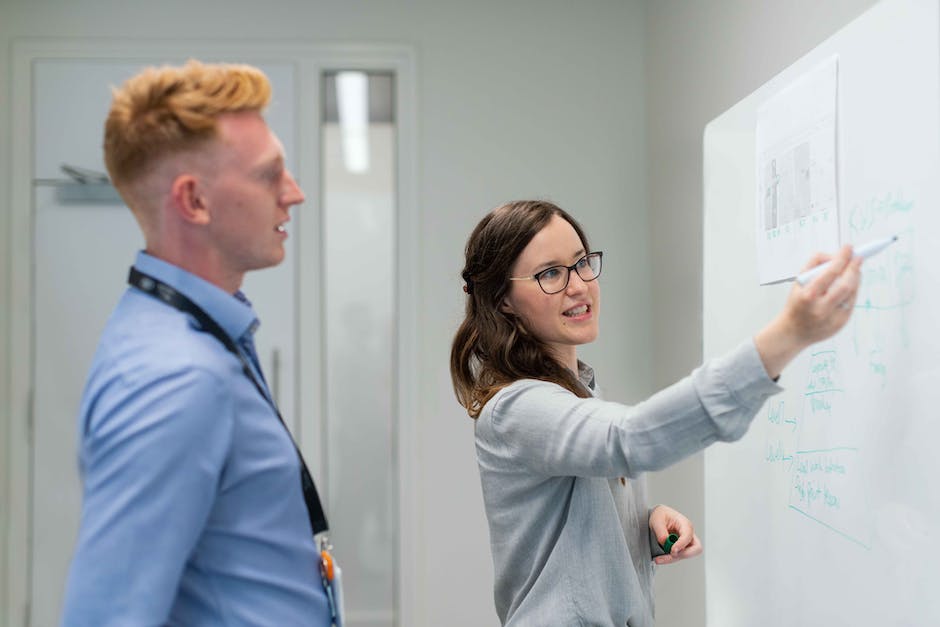Mastering Final Year Project Proposal Format in Engineering
Embarking on the unforgettable journey of an engineering student’s final year project ignites a unique opportunity to convert theoretical knowledge into practical applications. The crafting of a well-structured, in-depth, and highly effective project proposal is a crucial inaugural step of this endeavor. The impending essay enlightens on the fundamental aspects of project proposal drafting, while specifically catering to the intricate needs of engineering students. Shining a light on the specifics of engineering project proposals, this comprehensive guide will walk you through the step-by-step process of translating your ambitious projects into a comprehensive, feasible, and persuasive proposal.
Check out more:
Top 11 English and Literature Homework Help Websites for Students (Free and Paid)
Understanding Proposal Basics
Introduction to a Final Year Project Proposal
A Final Year Project Proposal is a document that engineering students submit to outline their plan for a project they intend to complete during their final year of studies. It provides an overview of the project, its objectives, the methodology to be employed, and the anticipated results. The purpose of developing this proposal is to clearly outline your project approach, demonstrate your understanding of the project topic, and to convince your professors that the project is feasible and beneficial.
Objectives of the Project Proposal
The objectives of your project proposal should be clear, concise, and achievable. They should reflect the overall purpose and aim of your project. In stating your objectives, be sure to highlight how your project will contribute to your field of study, the skills you hope to acquire or improve, and the anticipated project outcomes.
Project Description
The project description is a detailed overview of your project. It provides an outline of the issues or problems your project intends to address. In this section, you should discuss the context and background of your project, the issue your project will resolve, and why this issue is important in your field of study.
Project Methodology
In your project methodology, detail the methods and strategies you will use to achieve your objectives. This could include your approach to conducting research, the tools and technologies you plan to use, and the steps you will take to complete your project. The methodology should be realistic and achievable.
Conclusion
Your proposal conclusion should summarize your project objectives and methodology. Restate the importance of your project and the anticipated outcomes. Use this section to demonstrate to your professors that your project is feasible, relevant, and meaningful.

Engineering Project Proposal Specifics
Understanding the Importance of an Engineering Project Proposal
A final year Engineering Project Proposal is vital for an engineering student. This proposal describes the technical aspects of the project design, gauges the project’s feasibility, explores its practical application, lists materials and resources, considers safety factors, and examines any potential ethical implications.
Starting with the Basics: Project Title and Introduction
Begin your proposal with a concise, informative project title. This should be followed by an introduction that provides a brief overview of the project, including its objectives, the problem it seeks to solve, and its relevance to the engineering field.
Project Background and Rationale
In this section, provide an in-depth analysis of the problem or issue your project seeks to address. Draw upon well-researched, scientific evidence to solidify the need for your engineering solution. Explain the reasoning behind your project selection and specify the benefits and changes it could introduce.
Project Objectives
Clearly delineate your project’s primary and secondary objectives. These should be specific, measurable, achievable, relevant, and time-bound (SMART) goals. The objectives will serve as the roadmap for your project.
Project Design and Methodology
Outline a detailed project design and methodology, explaining the technical parameters, specifications, and processes that your project will employ. Describe the engineering theories and concepts you will apply. Detail the strategies or techniques you plan to use to achieve your objectives. This section should demonstrate a thorough understanding of your project’s technical requirements.
Practical Application and Project Feasibility
Discuss how your project can be practically applied and its feasibility. Address any potential risks, their mitigation strategies, and how your project will be implemented in a real-world situation. You should also consider and highlight the economic, environmental, and social feasibility of your project.
Materials and Resources
Enumerate the materials, resources, and technologies required. Also, consider both the availability and the cost of these resources. Detailing these necessities will help support the feasibility of your project.
Safety Considerations
In an engineering project, safety is of paramount importance. Identify any potential safety issues and explain how you plan to address them. This may range from observing standard safety procedures during the project to assessing how the final product could impact users’ safety.
Ethical Implications
Last, but not least, address any ethical implications of your project. As an engineer, adhering to ethical principles is essential. Discuss any potential ethical concerns related to your project, including its development, implementation, and potential societal impact.
Conclusion and References
Conclude your proposal by summarizing the information presented and reaffirming the need, benefits, and feasibility of your project. Finally, list all references, following the citation style approved by your department or supervisor. Make sure to credit all sources to avoid plagiarism, and provide a bibliography if necessary.
In conclusion, remember that the purpose of the final year Engineering Project Proposal is to convey that your project is technically sound, feasible, ethically responsible, and can be practically applied. Good luck with your engineering project proposal!

Proposal Writing and Formatting
Introduction
A final year project proposal provides a detailed plan and feasibility study of your engineering project and is submitted for approval before you begin your work. Your proposal should clearly and concisely convey your project’s objectives, methodology, expected outcomes and timeline. Follow the steps below to write an effective final year project proposal.
Properly Understand The Guidelines
Before you start writing your proposal, familiarize yourself thoroughly with the guidelines provided by your institution. These guidelines will provide you with the specified format, page length, and other important details like headings, subheadings, font size, etc., that you must adhere to. Ignoring this can lead to deduction of marks or your proposal being completely rejected.
Title of the Project
Now, start your proposal with a compelling title. The title should be simple and concise yet should provide a complete idea about what your project is. The title of your project plays a significant role in grabbing attention.
Abstract
After the title, write an abstract that provides a brief summary of your project. This summary should include key points from every section of the proposal from your objectives to your expected results.
Introduction
Your introduction should set the stage for your proposal. It should provide some background information about your project and explain why it’s important. You should also include a brief discussion about the existing literature on the topic, stating the gaps that your project aims to fill.
Goals And Objectives
This section should detail what you hope to achieve with your project. Be specific with your objectives and make sure they are realistic and achievable. Also, understand engineering jargon and ensure that you use it properly and consistently in this and other sections to show your deep understanding of your project.
Methodology
This section is where you detail how you plan to achieve your objectives. It should include details about your experiment design, equipment you will use, data you will collect, and how you will analyze that data.
Expected Results and Significance
In this section, write about what you expect the results of your project will be and what effect these results will have on the field of engineering. This section is very critical as it justifies your project’s necessity.
Time Schedule and Budget Estimate
Your proposal should also include a detailed schedule for completing your project as well as estimated costs. This shows that you have carefully thought through every stage of your work and that you have an understanding of the resources you need.
Conclusion
The conclusion should summarize your proposal and reaffirm the importance of your project. It is to convince your reader that your project is significant and achievable.
References
Finally, include a references section in which you list all sources you used when creating your project proposal. This adds credibility to your proposal and shows you have done your due diligence.
Formatting Your Proposal
Ensure that your proposal is visually appealing. Use headings and subheadings to organize your information and make it easier to read. Keep sentences and paragraphs short and to the point. Use bullet points and numbered lists where suitable. Ensure all tables, images, and graphs are clear and properly labeled. Pay careful attention to grammar and spelling.
Acknowledgements
Remember that your project proposal is not only a plan but also a persuasive document designed to convince your reader of the worthiness of your project. So take your time in writing it, and make sure it reflects the quality of work that you are capable of doing. Good luck!

Review and Refine
Review and Refine: Final Year Engineering Project Proposal
The culmination of your engineering education often consists of a final year project. By this point in your academic career, you have acquired a good grasp of your chosen area of study. A successful final year project proposal begins with a well-researched topic, an innovative approach, and the creation of a comprehensive and compelling proposal. The proposal is not simply written; it is refined through countless rounds of feedback, revisions, and proofreading. The goal of the review and refine phase is quality improvement. We aim to produce a proposal that communicates your idea clearly and convincingly while showing a profound understanding of the subject matter.
Understand the Importance of Reviewing and Refining
The process of reviewing and refining your proposal is critical to its success. By revising, proofreading, and seeking feedback on your proposal, you will ensure that your ideas are clear and persuasive. You’re also likely to catch and correct any errors or weak arguments. This demonstrates your ability to critically evaluate your work and strive for excellence, key qualities that advisors and examiners look for ensuring high grades.
Proofreading: the First Step to Refinement
Jot down the basic structure and contents of your proposal first, and then press on to the proofreading stage. It involves a careful review of the text to correct errors in grammar, syntax, punctuation, and spelling. It’s always easier to spot errors after taking a short break following the completion of your first draft. Sometimes, reading your work out loud helps in noticing awkward phrasing or run-on sentences that could make your argument less clear.
Editing: Clarify Your Ideas
Once you’ve cleared your proposal of basic errors, proceed to the editing stage. This is where you review your proposal’s structure, ideas, arguments, and presentation. Make sure the proposal flows logically and coherently from one point to the next, and that explanations are simple and easy to understand. Verify if your arguments are convincing and supported by research or data where necessary.
Seek Feedback: Ensure Objectivity
Feedback from advisors or peers is an invaluable part of the review process. They can provide an objective standpoint, identifying blind spots and providing suggestions on how to improve certain points or sentences. Incorporate feedback that aligns with your proposal’s goal but remain critical to ensure that the input only better articulates your original intention.
Revision: Implement Feedback and Polish Your Work
The revision stage is where you implement the feedback received during the review process, make necessary adjustments, and polish your work. Revise contents to improve flow, clarity, and cogency. Ensure that scientific terms are used accurately, data is presented correctly, and the invention or project is portrayed as novel and useful.
Finally, the refinement process is not a one-time event – it requires several iterations to produce a high-quality proposal. Hence, patience, time, and effort are important in this process.
By following these steps, not only will you refine your proposal, but you will also learn a critical approach to academic work, enhancing your research, critical thinking and writing skills.

After journeying through this systematic exploration, you are now poised to delineate your engineering project in a proposal that is powerful and compelling, polished by the nuances of engineering lexicons, and meeting the highest formatting standards. Equipped with a profound understanding of proposal essentials, the intricacies of engineering project specifics, and the ability to review and refine, you stand prepared for the ultimate test of conveying your project idea persuasively. As you take the stage, may the diligence, commitment, and precision reflected in your project proposal bear testimony to your potential as a future engineer.